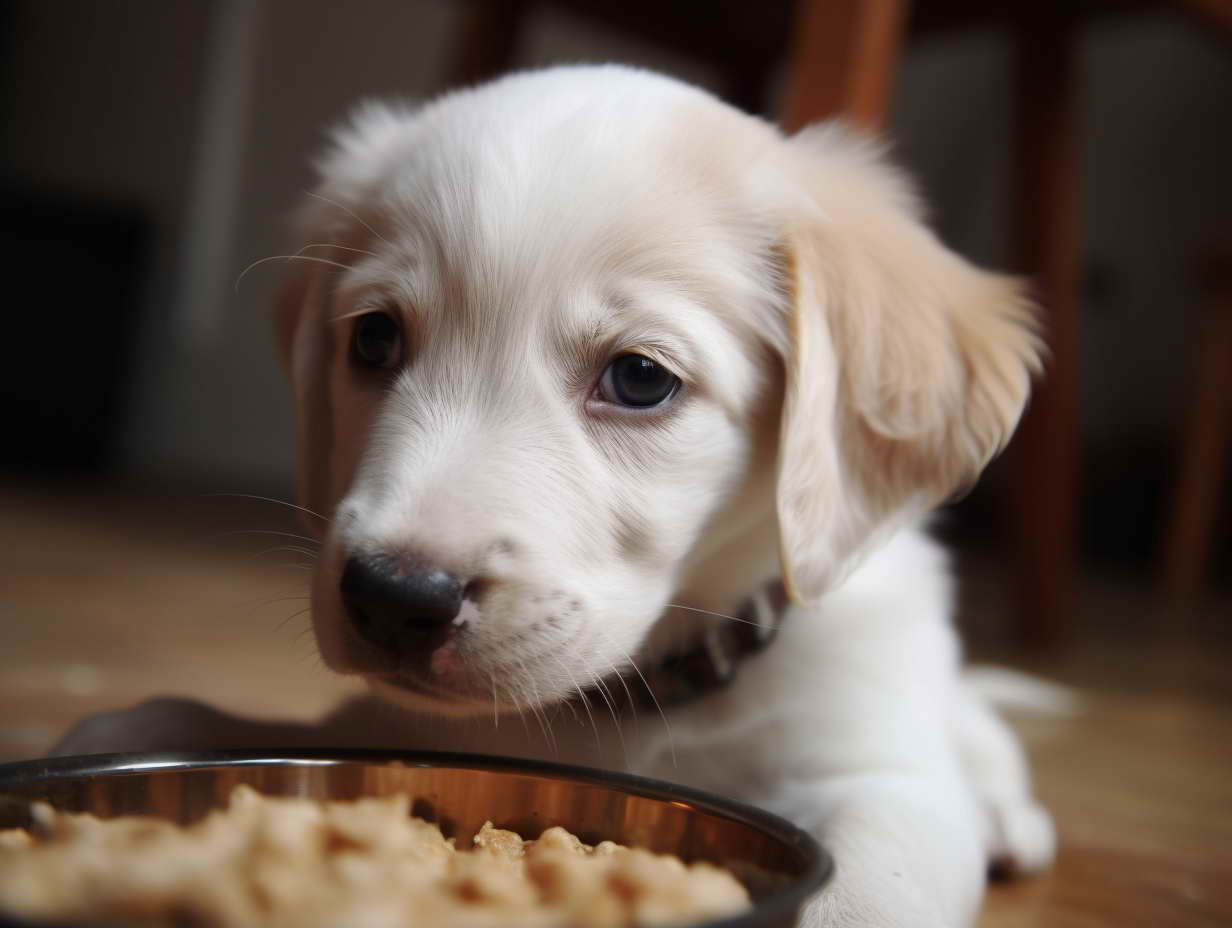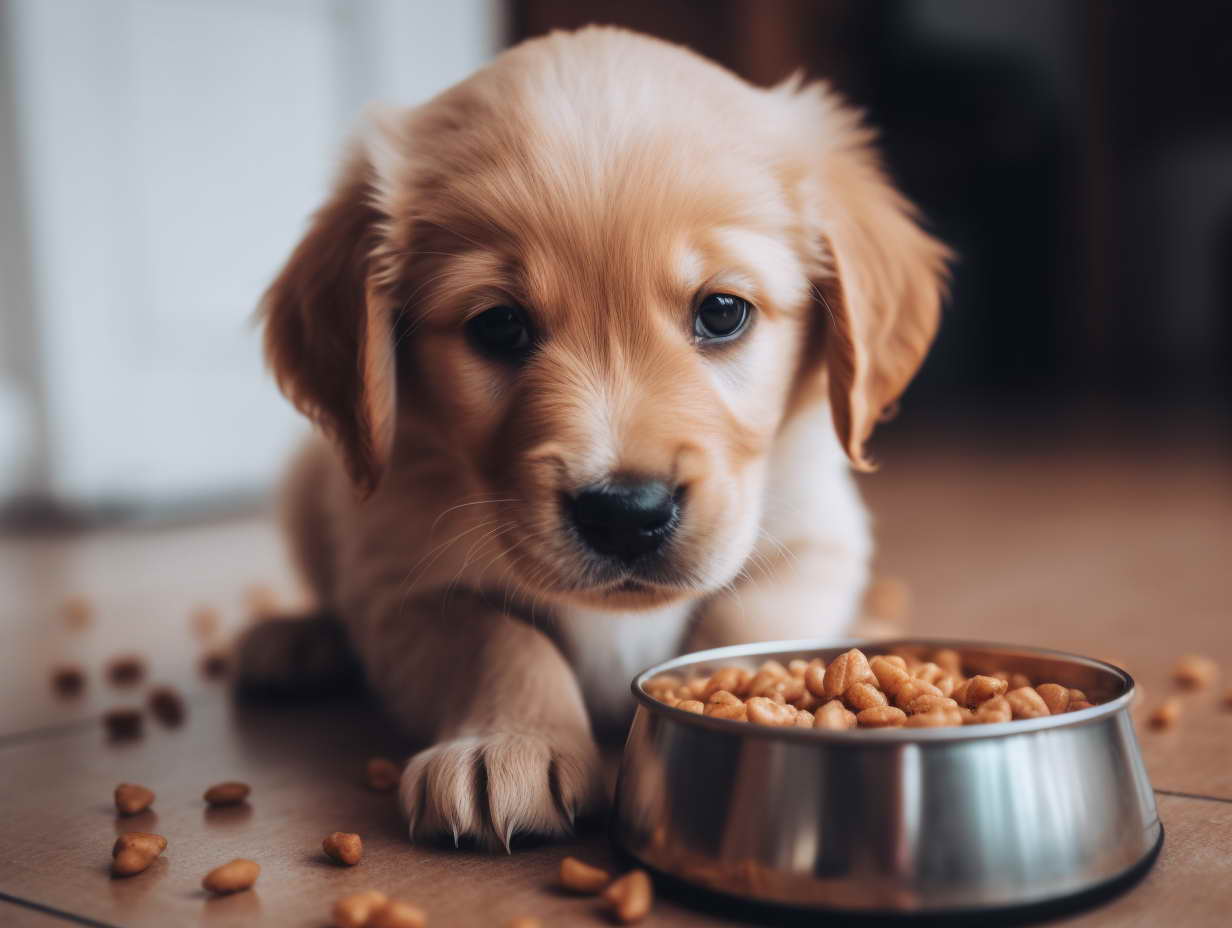When Can Puppy Start Eating Dog Food: A Comprehensive Guide
Introduction
Bringing home a new puppy is an exciting experience, but as a responsible pet owner, you may wonder when it’s the right time to transition from puppy food to adult dog food. This transition is crucial for your puppy’s health and development. In this detailed guide, we’ll explore the topic of when a puppy can start eating dog food. We’ll provide you with valuable insights, practical tips, and answers to frequently asked questions to ensure a seamless transition for your furry friend.
When Can Puppy Start Eating Dog Food: A Step-by-Step Guide
Transitioning your puppy from a diet of mother’s milk to dog food is a crucial step in their growth and development. It requires careful consideration of their age, breed, and nutritional needs. Let’s dive deeper into this process with a step-by-step guide:
1. The Weaning Stage
The weaning stage is the starting point for introducing solid dog food to your puppy’s diet. This phase typically begins around the age of three to four weeks. At this stage, puppies start showing curiosity about their mother’s food and may even attempt to chew on kibble or lap at softened dog food.
To initiate the weaning process, you can follow these steps:
- Moistening Dog Food: Start by moistening high-quality puppy kibble with warm water or puppy milk replacement formula. This softens the food and makes it easier for your puppy to consume.
- Gradual Introduction: Introduce the softened dog food in small amounts. Place it in a shallow dish, making sure it’s easily accessible for your puppies. Initially, they might play with the food more than eating it, but this is a natural part of the learning process.
- Observe Your Puppies: Keep a close eye on your puppies during mealtime. Some may take to solid food more quickly than others. Monitor their reactions and adjust the process accordingly.
2. Introducing Puppy Food
Around the age of four to six weeks, your puppies will become more accustomed to eating solid food. At this stage, you can begin to transition from moistened kibble to dry puppy food. Here’s how to do it:
- Choose Quality Puppy Food: Select high-quality puppy food that meets the nutritional needs of your growing pets. Look for options that are specifically formulated for puppies, as they have the right balance of essential nutrients.
- Mixing with Puppy Milk: Initially, mix the dry puppy food with a bit of puppy milk replacement formula to ease the transition. Gradually decrease the amount of formula over time.
- Gradual Transition: Over the course of several weeks, gradually increase the proportion of dry puppy food in their meals while decreasing the amount of moistened food. This helps them adjust to the new texture and taste.
3. Gradual Transition to Adult Dog Food
Puppies usually stay on a diet of puppy food until they are around one year old, but the timing may vary based on their breed and size. Smaller breeds tend to mature more quickly, while larger breeds require more time to grow. When it’s time to switch to adult dog food:
- Consult Your Veterinarian: Before making the transition, consult your veterinarian. They can provide personalized advice based on your puppy’s specific needs and development.
- Gradual Switch: When you and your vet decide it’s time to switch, do so gradually. Mix the new adult dog food with the remaining puppy food, slowly increasing the ratio of adult food until the transition is complete.
- Monitor Your Puppy: Keep a close watch on your puppy’s weight, energy levels, and overall health during the transition. If you notice any issues, consult your vet immediately.

Frequently Asked Questions
Can I switch to adult dog food earlier if my puppy seems to be growing rapidly?
Yes, some puppies grow faster than others. If your puppy is developing well, has a healthy weight, and is free from digestive issues, you can consider transitioning to adult dog food a bit earlier. However, always consult your vet before making this decision.
Is it okay to mix puppy and adult dog food during the transition?
Yes, mixing puppy food with adult dog food during the transition can make it easier for your puppy to adjust to the new diet. Gradually increase the proportion of adult dog food in the mix over several weeks.
Are there any signs that my puppy is ready for adult dog food?
Watch for signs like stable weight gain, healthy teeth, and improved digestion. If your puppy displays these signs, it may be time to discuss transitioning to adult dog food with your veterinarian.
Should I choose dry or wet adult dog food for my puppy?
Both dry and wet adult dog food options can be suitable for your puppy, depending on their preferences and needs. Some puppies prefer the texture of wet food, while others enjoy the crunch of dry kibble. Consult your veterinarian for personalized advice.
How can I ensure a smooth transition to adult dog food?
To ensure a smooth transition, gradually mix the new food with the old food over the course of a week or two. Monitor your puppy’s response and make adjustments as needed. Always provide fresh water.
Can I give my puppy homemade dog food instead of commercial brands?
While homemade dog food can be an option, it’s crucial to ensure that it meets all of your puppy’s nutritional needs. Consult with your veterinarian or a canine nutritionist to create a balanced homemade diet if that’s your preference.
Conclusion
Transitioning your puppy from puppy food to adult dog food is an important step in their development. It’s crucial to make this transition at the right time to ensure your puppy receives the necessary nutrients for optimal growth and health. Remember that every puppy is unique, so consulting with your veterinarian is key to determining the best approach for your furry friend. By following these guidelines and keeping an eye on your puppy’s development, you’ll ensure a smooth and healthy transition to adult dog food.

Leave a Reply